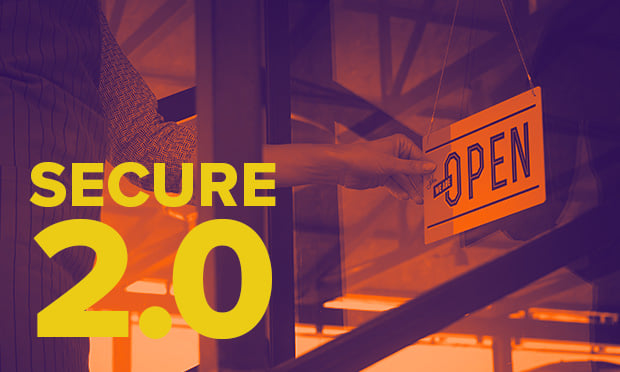(Bloomberg) -- Automation, that demon of American job security,may be the patron saint of retirement savings.
|The average balance in a 401(k) defined-contribution account at FidelityInvestments hit a record $95,500 in the first quarter, up morethan 9 percent from a year earlier, the company reported thismorning.
|Investment performance gets credit for 70 percent of theadvance, and 30 percent was due to contributions from employees andemployers. Those combined contributions also hit a record high, at12.9 percent. A record 27 percent of workers in aFidelity plan increased their contributions, as a percentage oftheir salaries, over the past 12 months.
|Those employees didn't all suddenly wake up and get seriousabout saving. The increase is also due to a feature some largeemployers have added to plan designs to bump up savings rates.
|Auto-escalation, as it's called, often used in concert withautomatic enrollment of new hires into the company 401(k), nudgesemployee contribution rates up one percentage point a year untilthey reach a cap.
|Many employers leave it to workers to opt in toauto-escalation, but 16.1 percent of Fidelity's plans make itautomatic on enrollment in a plan. That's up from 14.4 percent in2016's first quarter.
|"Auto-escalation isn't all that widespread, yet is driving 50percent of the savings increases" among that 27 percent of workers,said Jeanne Thompson, a senior vice president at Fidelity. "Itemphasizes how important auto-enrollment and auto-escalation havebeen to the retirement system." Fidelity's 401(k) analysiscovers 22,100 defined contribution plans and the 14.8 millionpeople in those plans.
|It's helping younger workers prepare for old age—sometimeswithout even realizing it—on the stark American retirementlandscape.
|There, only one-third of workers save in a 401(k) or similarplan (many simply don’t have access to one), and about half ofhouseholds with people 55 and older have no retirementsavings at all, according to the U.S. GovernmentAccountability Office.
||Even at companies that offer a plan, only about half of workerssign up for it, and fewer than 40 percent of all employersautomatically enroll their employees, according to the Society ofHuman Resource Management. Generally the default employeecontribution is 3 percent of salary, when it should be more than 15percent, including both your contribution and your employer’smatch, according to David Blanchett, Morningstar Inc.’s head ofretirement research.
|In the first quarter, 68 percent of the rise in savingsrates of workers under age 30 was due to automated increases,Fidelity's analysis found. There was a 42 percent rise from a yearago in the number of millennial Individual Retirement Accounts thatgot contributions, and a 51 percent jump in the amount ofcontributions.
|Overall, IRA balances gained 4.7 percent to reach an average of$98,100. The amount contributed to IRAs rose 38 percent from 2016'sfirst quarter. Some of that jump could be courtesy ofprofit-sharing payouts, as well as boomers retiring and rollingover money from 401(k)s into IRAs or consolidating multiple 401(k)sinto an IRA, Thompson said. Then there is the annual race tocontribute to IRAs before the income tax deadline.
|The number of people who contribute to both an IRA and a 401(k)rose by 9 percent, to almost 1.4 million. Among such two-fistedsavers, the average combined balance rose to its highest ever:$273,600, a 4.9 percent gain from a year ago. That is likelydue to employees switching jobs and moving their assets from aprevious employer's 401(k) into an IRA.
|Fidelity is seeing more people contribute to both 401(k)sand health savings accounts, or HSAs. That slice of saversgrew 21 percent between 2014 and 2016.
|Health savings accounts tend to accompanyhigh-deductible health-care plans. For people with the cash flow topay for health care out of pocket, money left to compound in thetax-deferred accounts can serve as stealth retirement savings,since an HSA is triple tax-free: You put pre-tax money into it ,your gains compound tax-free, and you can withdraw from itwithout paying taxes as long as the withdrawals ares used forqualified medical expenses.
|Thompson has seen people who retire at 62 or 63 using an HSA tohelp bridge the gap until they are eligible for Medicare at 65.With retiree medical expenses now at about $260,000 for a couple,according to Fidelity, every bit of savings helps.
|Copyright 2018 Bloomberg. All rightsreserved. This material may not be published, broadcast, rewritten,or redistributed.
Complete your profile to continue reading and get FREE access to BenefitsPRO, part of your ALM digital membership.
Your access to unlimited BenefitsPRO content isn’t changing.
Once you are an ALM digital member, you’ll receive:
- Critical BenefitsPRO information including cutting edge post-reform success strategies, access to educational webcasts and videos, resources from industry leaders, and informative Newsletters.
- Exclusive discounts on ALM, BenefitsPRO magazine and BenefitsPRO.com events
- Access to other award-winning ALM websites including ThinkAdvisor.com and Law.com
Already have an account? Sign In
© 2024 ALM Global, LLC, All Rights Reserved. Request academic re-use from www.copyright.com. All other uses, submit a request to [email protected]. For more information visit Asset & Logo Licensing.








